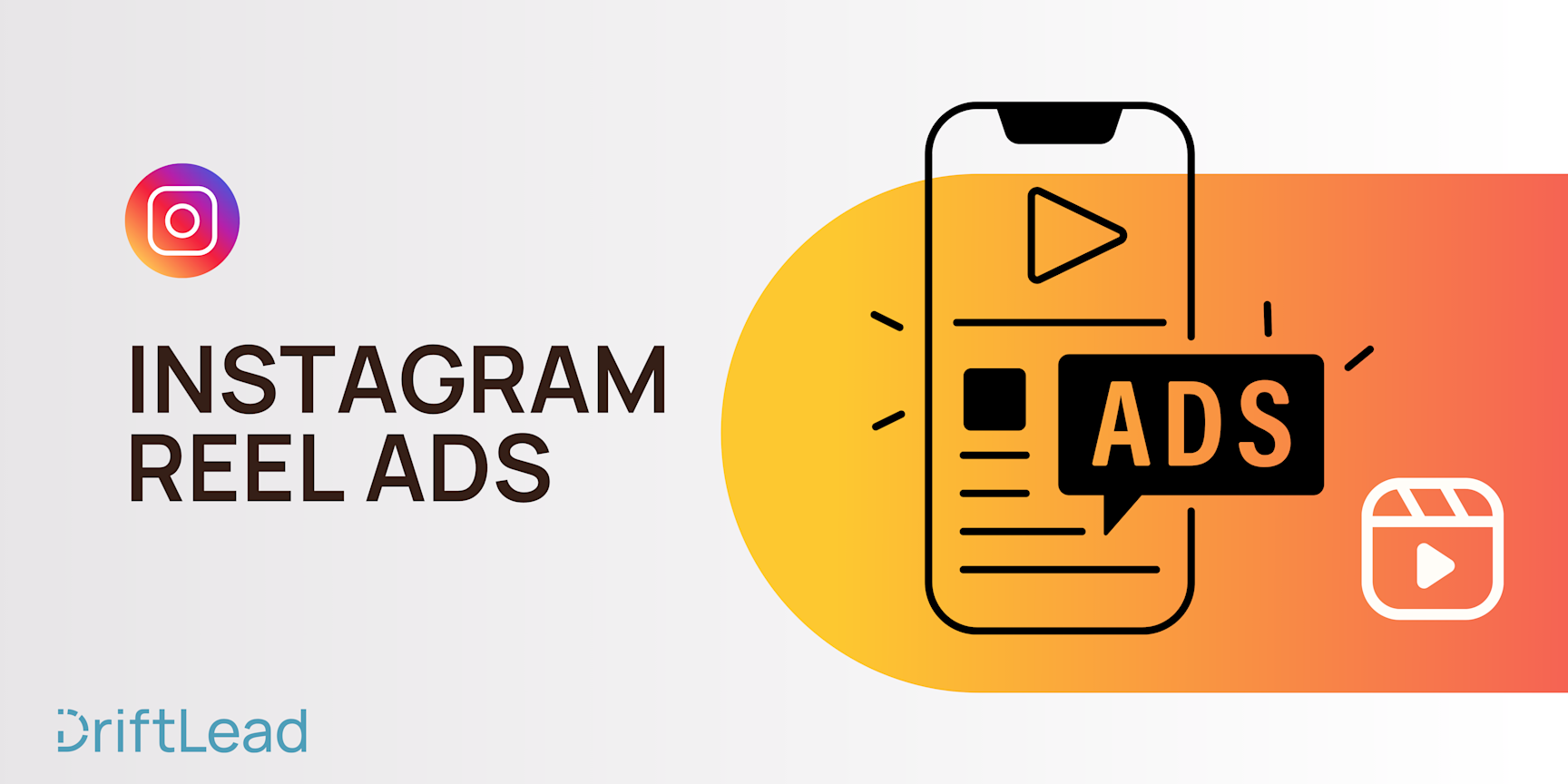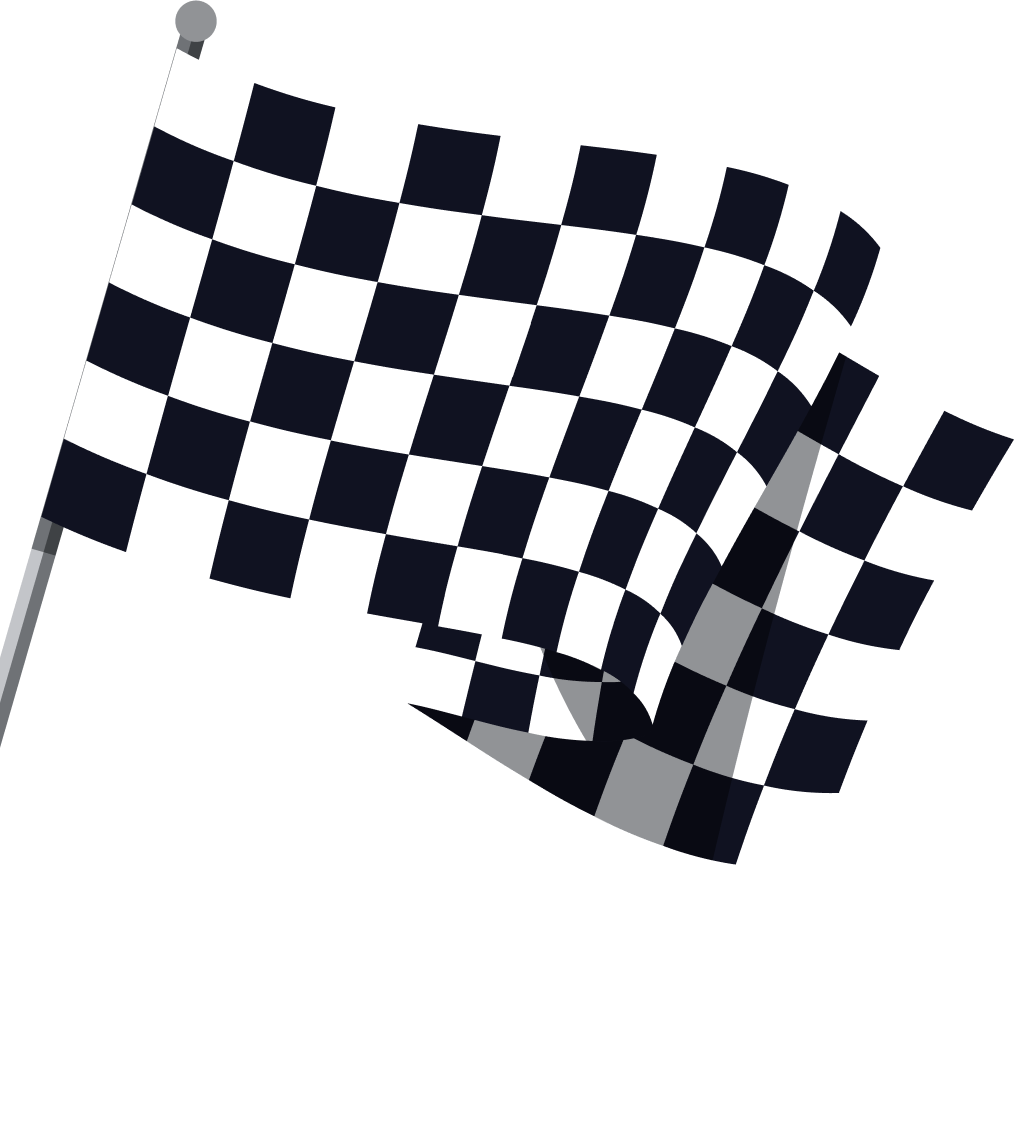Lead Gen Landing Pages for Beginners: Best Practices and Examples
19 Jul, 2024
Learn how to create and optimize lead gen landing pages that convert in this guide for beginners.

Jump to:
Hop on our weekly newsletter train! We're sharing tips so stellar, we're practically job-threatening ourselves!
Ready to unlock the secrets of lead generation landing pages and transform your website into a lead-capturing machine? If you’ve ever felt like your website visitors are slipping through your fingers like sand, you’re in the right place. Let's turn those casual browsers into eager leads with some tried-and-true strategies. 🌟
In this post, we’ll dive into the essentials of creating high-converting lead gen landing pages. Whether you’re a seasoned pro looking to refine your strategy or a complete beginner just getting started, we’ve got you covered. From crafting compelling headlines to optimizing your call-to-action buttons, we’ll walk you through the best practices that can help you maximize your conversions.
By the end of this guide, you’ll be equipped with all the knowledge you need to create landing pages that not only attract visitors but also convert them into valuable leads. 🚀
Why Use Lead Generation Landing Pages?
Lead-generation landing pages are powerful tools for capturing potential customer information and growing your business. Here are some key reasons to use them:
Focused Conversion: Unlike general web pages, lead gen landing pages have a single, clear purpose - to collect visitor information. This focused approach typically results in higher conversion rates. 🔎
Targeted Messaging: You can create multiple landing pages tailored to specific audience segments or marketing campaigns, allowing for more personalized and effective messaging. 🎯
Measurable Results: Landing pages make it easy to track conversions and gather data on what's working. This allows for continuous optimization and improvement of your lead generation efforts. 📏
Qualifying Leads: By offering specific content or offers, you can attract and capture information from visitors who are more likely to be interested in your products or services. 📝
Testing and Optimization: It's easier to A/B test different elements on a landing page than on your main website, allowing you to refine your approach for maximum effectiveness. 🧪
Streamlined User Experience: Landing pages create a smoother path to conversion for visitors by removing distractions and focusing on a single call to action. 🙋♂️
Supporting Specific Campaigns: Whether you're launching a new product, promoting an event, or offering a free trial, landing pages provide dedicated spaces to support these initiatives. 💻
Increased Trust and Credibility: Well-designed landing pages with social proof, testimonials, and clear value propositions can quickly build trust with potential customers. 🏆
Key Elements of a High-Converting Lead Gen Landing Page
Creating a high-converting lead generation landing page involves several crucial elements that work together to capture visitor information and drive those leads 🤑. Here are the key components:
Clear and Compelling Headline
Your headline is the first thing visitors see, so it needs to grab attention and clearly communicate the value of your offer. Make it benefit-focused and concise to immediately engage your audience.
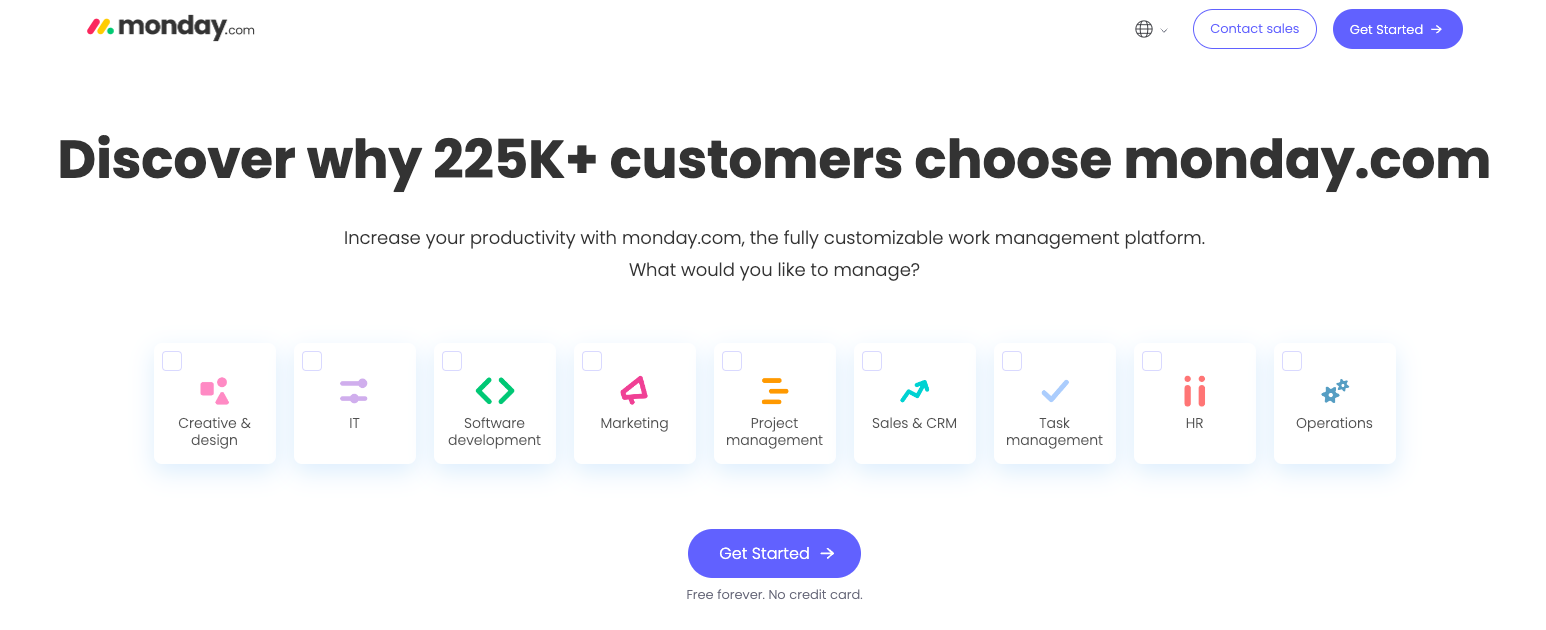
Monday.com mentions its huge user base in its headline to earn instant credibility.
Strong Visuals 👀
Use high-quality images or videos that illustrate your offer and resonate with your target audience. Visuals should support your message and help convey the benefits of your product or service.
Concise and Persuasive Copy 💬
Keep your text short, descriptive, and to the point. Use easy-to-read bullet points and short paragraphs to highlight key benefits and features. Your copy should persuade visitors that your offer is worth their contact information.
Effective Call-to-Action (CTA) 📞
Your CTA should be clear, prominent, and enticing. Place it above the fold, where it is immediately visible without scrolling. Use action-oriented language that encourages visitors to take the next step (e.g., "Get Your Free Guide" or "Sign Up Now").
Trust Signals 🥇
Testimonials and Reviews: Showcase positive feedback from satisfied customers.
Trust Badges: Display security badges or certifications to enhance trustworthiness.
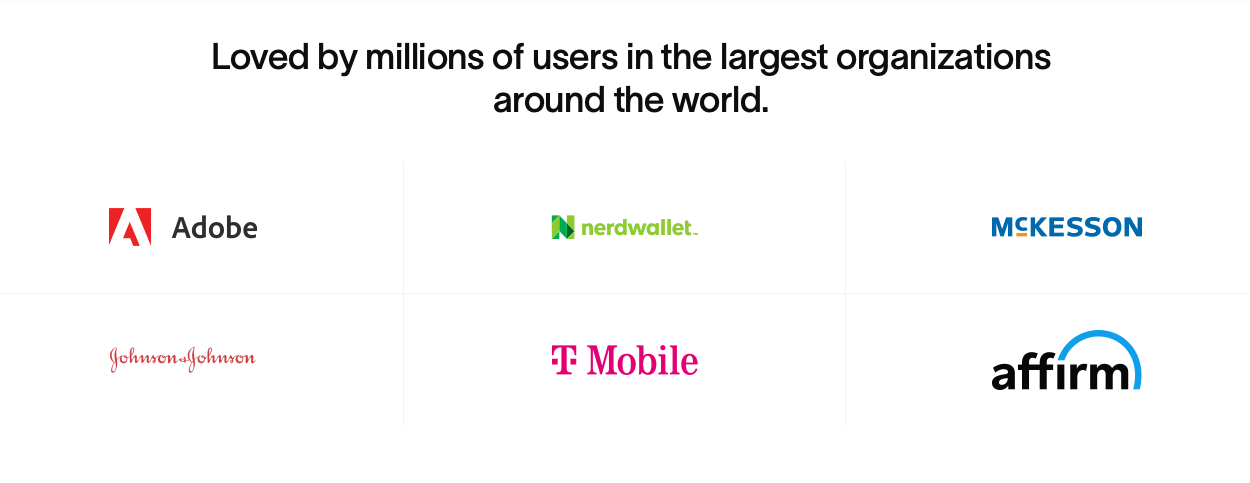
Above is an example of the Asana landing pages and the large brand names that use their platforms.
Value Proposition 💰
Clearly articulate what makes your offer unique and why visitors should choose you over competitors. This can be a brief statement or a list of key benefits that set you apart.
Social Proof ⭐️
Include social proof elements like:
Customer Reviews: Highlight positive experiences from real users.
Case Studies: Provide detailed examples of how your product or service has helped others.
Number of Users: Mention the number of customers or clients you serve to build credibility.
Mobile Optimization 📲
Ensure your landing page is fully responsive and looks great on all devices. With increasing mobile traffic, a mobile-friendly design is essential for capturing leads on smartphones and tablets.
A/B Testing 🧪
Regularly test different versions of your landing page elements (headlines, images, CTAs) to see what works best. Use the data to continuously optimize and improve your conversion rates.
Examples of Effective Lead Gen Landing Pages
Now, fortunately for you, lead-gen landing pages are not an earth-shattering new concept in PPC. You don't need to reinvent the wheel, but you can learn from those who are already killing it.
Hubspot
HubSpot, the inbound marketing guru, uses "How-To" headlines to promise valuable knowledge and then converts their readers into CRM and CMS users.
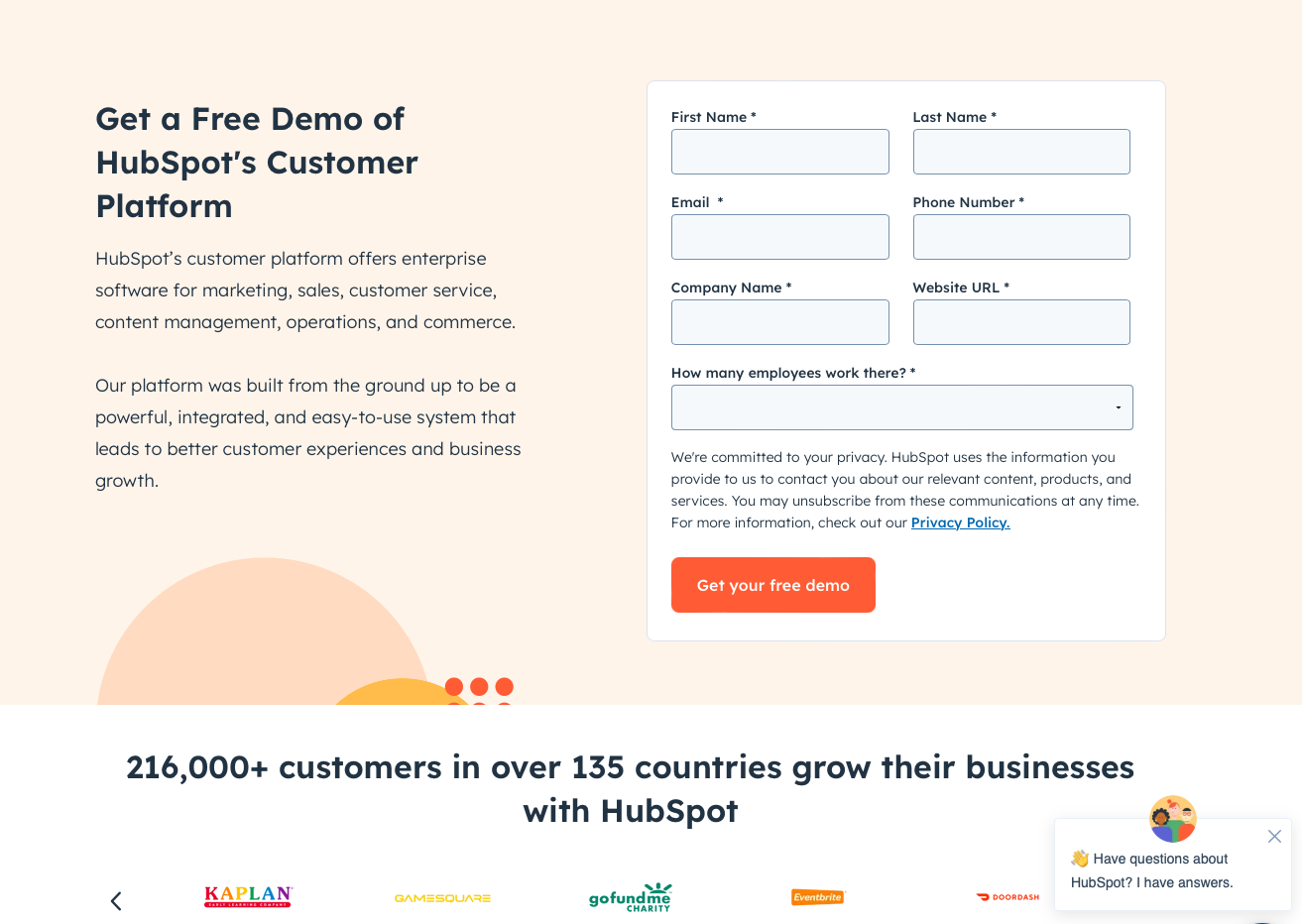
What Works Well:
Uses a clear call to action and concise copy
Emphasizes that the offer is free, reducing friction for sign-ups.
Builds credibility with existing client badges
Key Takeaway: Make the sign-up process as compelling and easy as possible.
Unbounce
Unbounce, the landing page maestro, keeps it simple with a clear value proposition and social proof. They practice what they preach – now that's meta! 🎭
What Works Well:
Clear, concise headline that communicates the value proposition.
Emphasizes that it's free to start.
Includes compelling visuals and videos to show the product in action
Key Takeaway: Use visuals to showcase what your product does or how it works
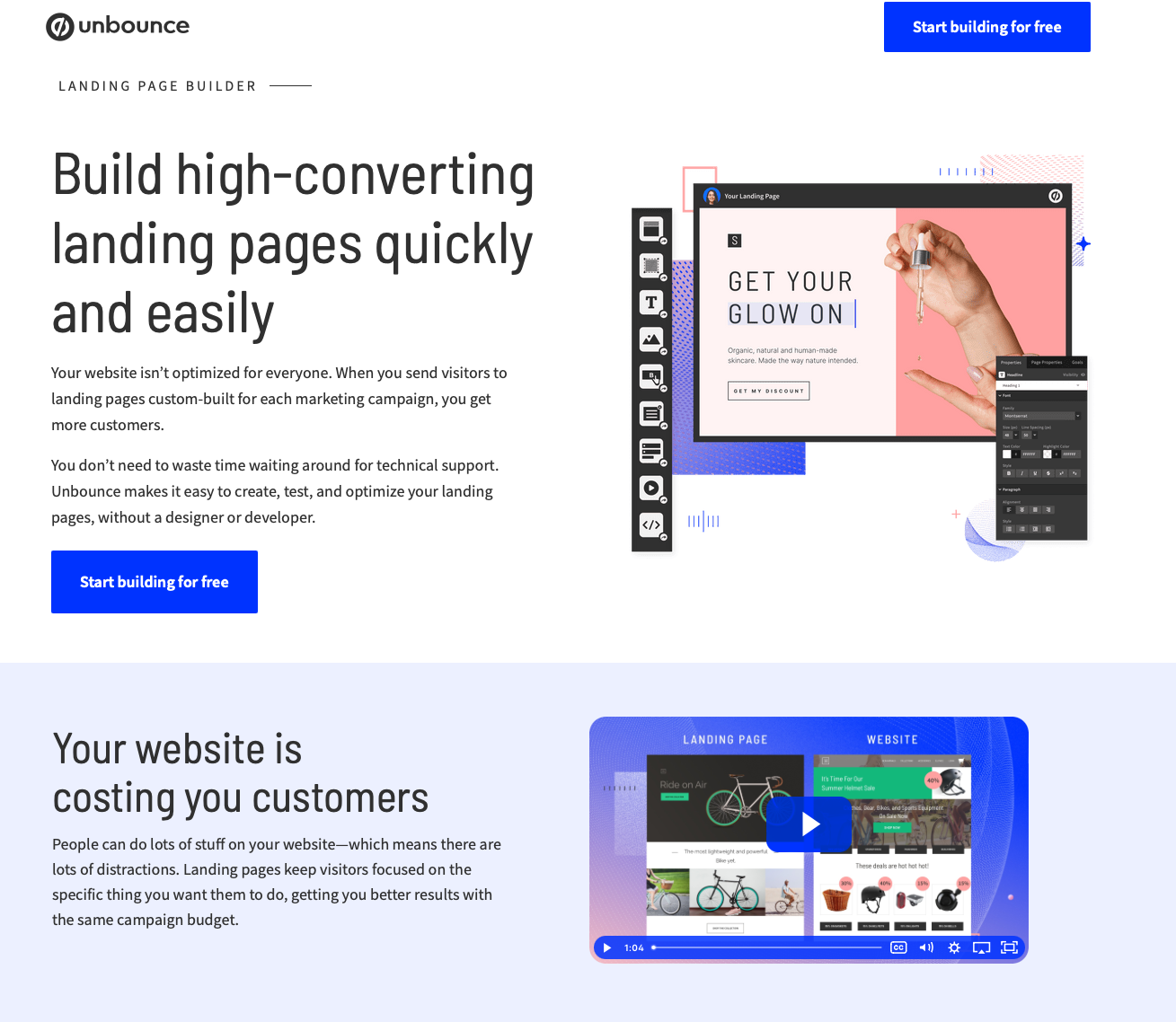
Shopify
Shopify, the e-commerce giant, speaks directly to aspiring entrepreneurs with an action-oriented headline. It's like a digital "You can do it, and it's super cheap!" pep talk. 💪
What Works Well:
Strong offer that compels people to convert
Super minimal form - only an email address is requested
Offers risk-free 3-day trial
Key Takeaway: Address potential concerns upfront to increase conversions.
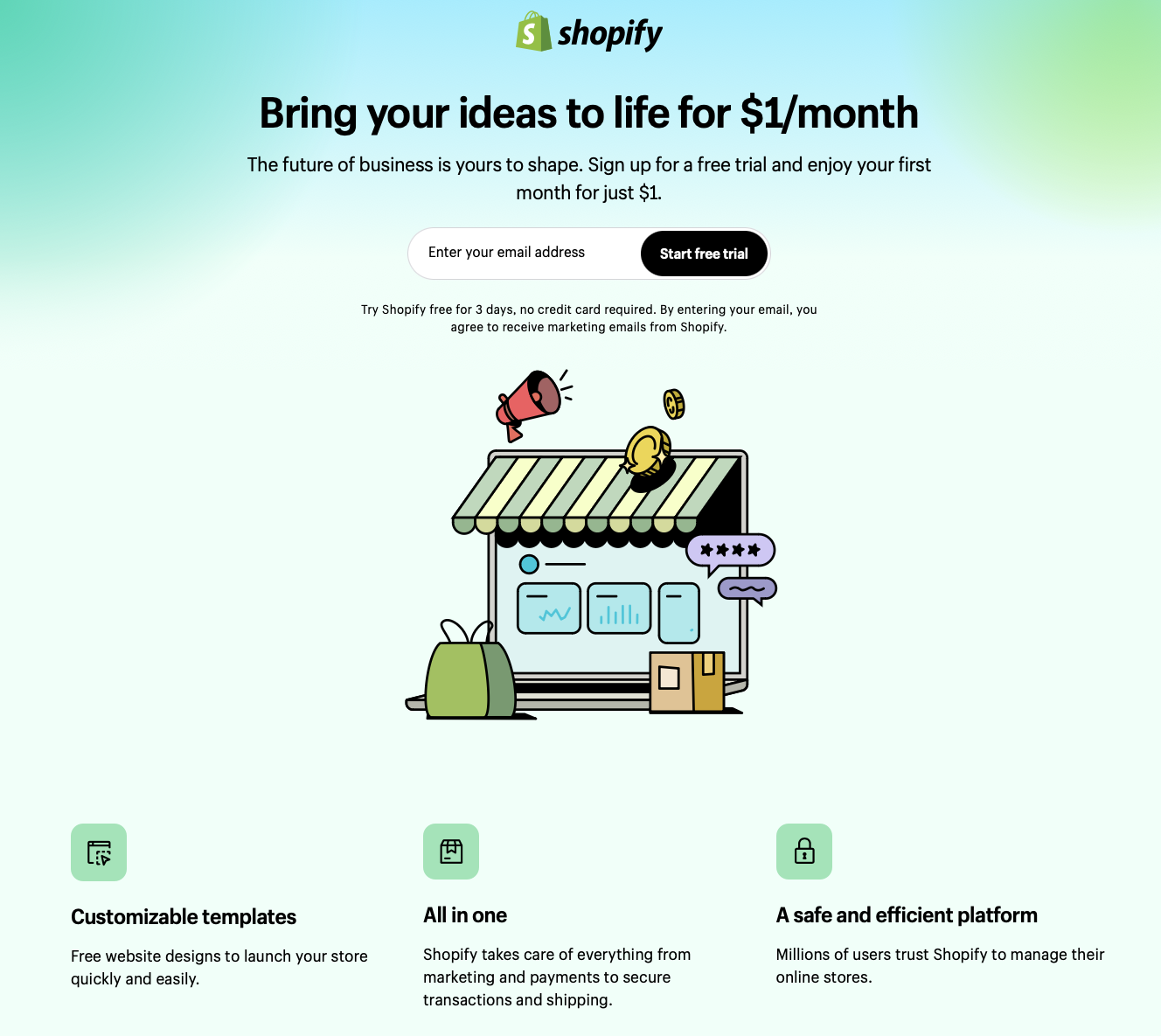
Testing and Optimization
Continuous testing and optimization are crucial for maximizing the performance of your lead generation landing pages. By systematically experimenting with different elements and analyzing the results, you can incrementally improve your conversion rates and lead quality. Here’s how to approach testing and optimization effectively:
1. Establish Baseline Metrics 📊
Alright, so you've built your lead generation landing page and it's live. But don't kick back and relax just yet! The real magic happens when you start testing and optimizing. Think of it like tuning a guitar – you need to make sure every string is just right to play the perfect tune. 🎸 Here’s how to get started.
2. Identify Key Elements to Test 🔍
First things first, you need to know where you stand. Document your current performance metrics, including conversion rate, bounce rate, average time on page, and form completion rate. These baseline metrics will serve as your starting point, kind of like the “before” picture in a fitness journey. 🏋️♂️
3. Develop Hypotheses 💡
For each test, formulate a clear hypothesis. For example: "Changing the CTA button color from blue to orange will increase click-through rates by 10%."
4. Implement A/B Testing ⚖️
Use A/B testing tools to create variations of your landing page and split traffic between them. Some popular A/B testing tools include:
Google Optimize
Optimizely
VWO (Visual Website Optimizer)
Unbounce
HubSpot's A/B Testing Tool
These tools allow you to test different versions of your page simultaneously and gather statistically significant data.
5. Analyze Results 📈
Once your test has run for a sufficient period (usually 2-4 weeks, depending on traffic volume), analyze the results. Look for statistical significance (typically 95% confidence level or higher), improvement in key metrics, and any unexpected outcomes or insights.
6. Implement Winning Variations 🏆
If a variation shows a statistically significant improvement, implement it as your new control. If the results are inconclusive, consider refining your hypothesis and running a new test. Remember, even Edison had to try a few times before he got the light bulb right. 💡
7. Utilize Heatmaps and Session Recordings 🔥
In addition to A/B testing, use tools like Hotjar or Crazy Egg to generate heatmaps and session recordings. These provide valuable insights into user behavior, showing where visitors click, scroll, and spend time on your page.
8. Gather User Feedback 🗣️
Use on-page surveys or exit-intent popups to collect qualitative feedback from visitors. Tools like Qualaroo or SurveyMonkey can help you understand why visitors aren’t converting and what might persuade them to do so.
9. Monitor Page Speed 🚀
Use tools like Google PageSpeed Insights or GTmetrix to regularly check your landing page’s loading speed. A slow-loading page can significantly impact conversion rates.
10. Continuous Iteration 🔄
Remember that optimization is an ongoing process. Regularly revisit your landing pages, even those performing well, to identify new opportunities for improvement.
Always base your decisions on data, and don’t be afraid to experiment with bold changes – sometimes, the most significant improvements come from unexpected places. Happy testing! 🎉

